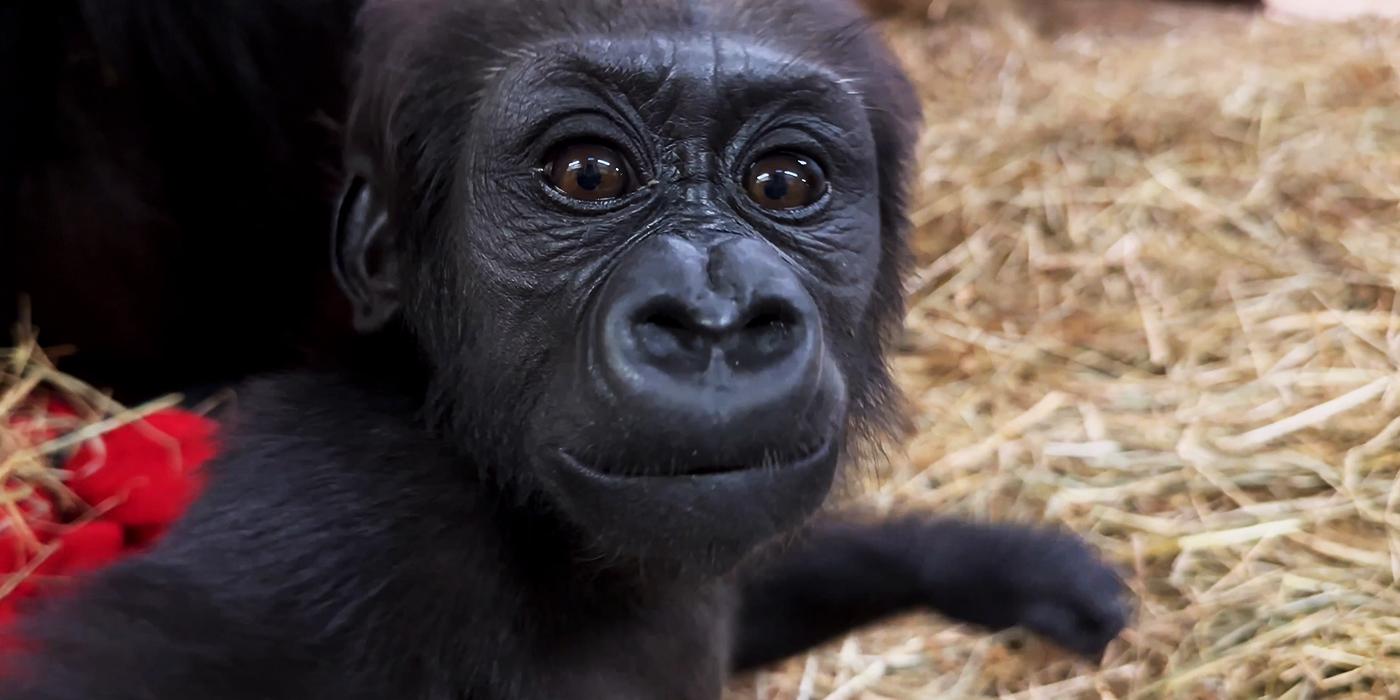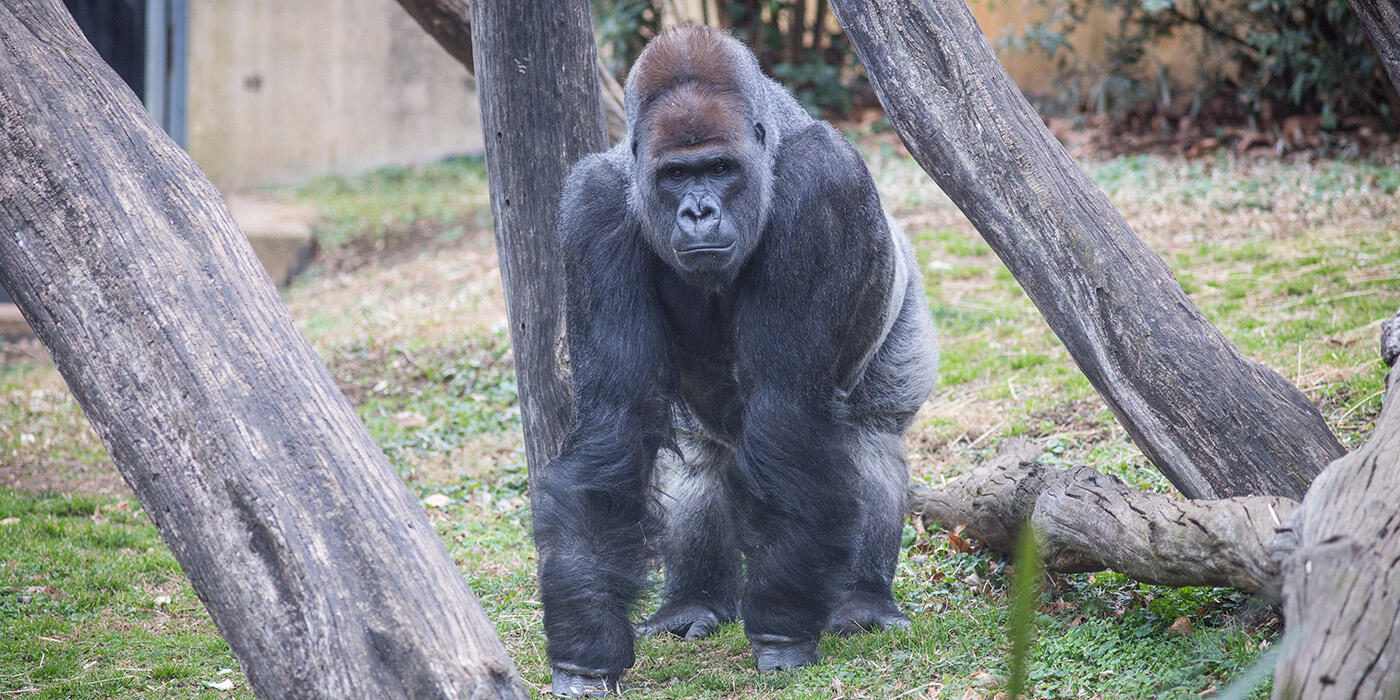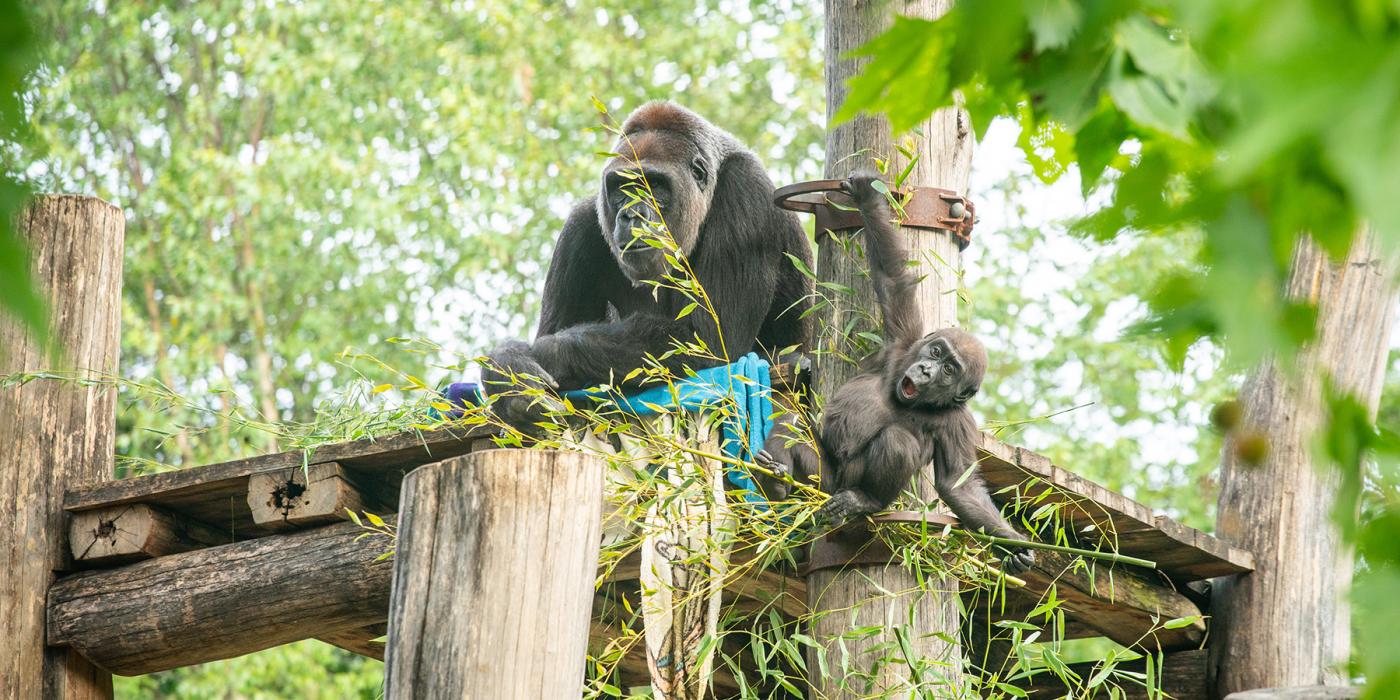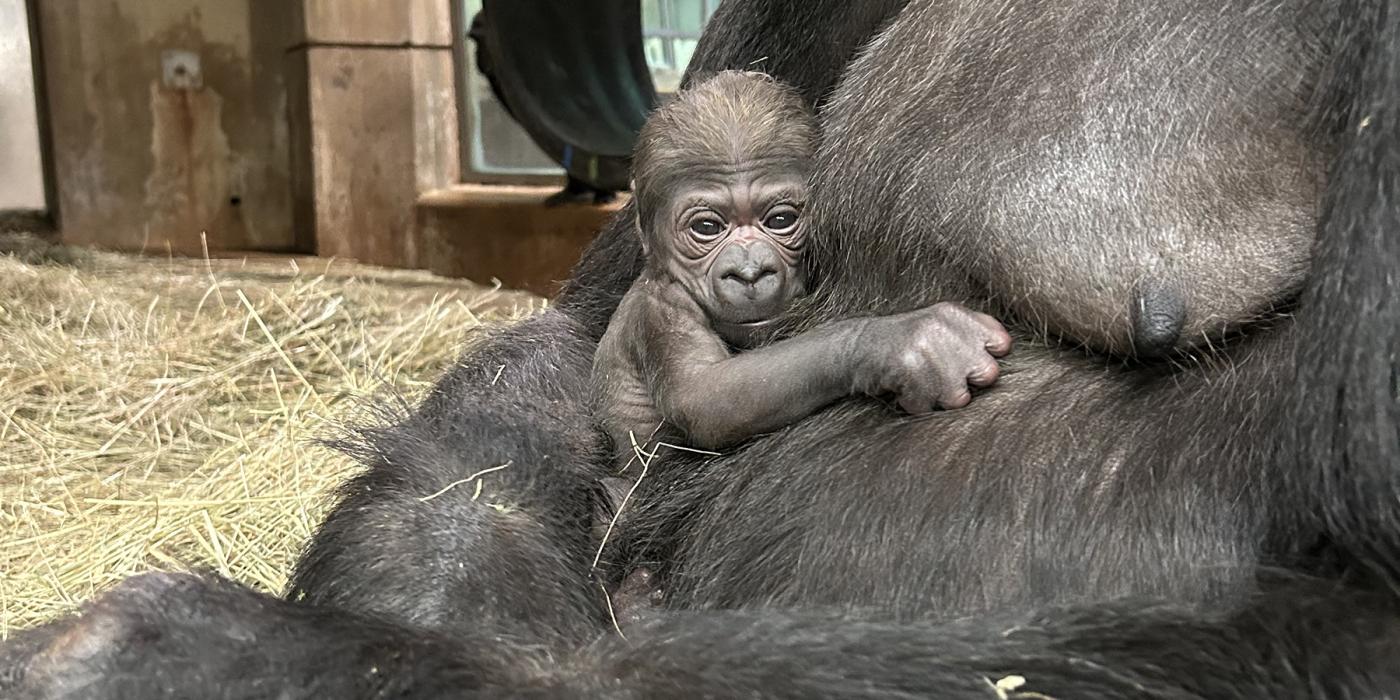#GorillaStory: Mothers Know Best
As the days become shorter and winter approaches, our western lowland gorilla troop is spending as much time as they can in the fall sun. Visitors who come to the Smithsonian’s National Zoo and Conservation Biology Institute on a warm autumn day can see the gorillas munching on the bright-colored leaves that fall into their outdoor yard, or hanging out on their climbing structures, or foraging for enrichment items the animal care team places throughout their habitat area.
It’s an exciting time for any gorilla. But it’s most exciting for 5-month-old infant Zahra, who is experiencing her first autumn! With each passing week, the youngest gorilla in our troop is becoming stronger, her personality is developing, and she is reaching new milestones.
On a recent sunny day, the keeper team got to witness some gorilla excitement: 32-year-old silverback Baraka, who is Zahra’s father, took the opportunity to hold Zahra…which didn’t sit well with her mother, Calaya.
Time for a little backstory. Calaya’s parenting style is to let her infants explore on their own when they are young—first with Moke (Zahra’s 5 year old brother, who lives with the troop here at the Zoo) and now Zahra. We often see Zahra out of Calaya’s arms or off her back, crawling around on her own and investigating her surroundings. But it’s worth noting that Baraka also has plenty of experience around gorilla babies, including Moke. His natural instinct is to protect infants, especially ones who are unattended. So perhaps in that moment, Zahra looked like a baby that needed to be picked up? We’ll never really know for sure.
Either way, to say that Calaya wasn’t thrilled with this development would be an understatement. Baraka was calm with Zahra, but Calaya was visibly upset and vocalizing. That’s her baby! Fortunately, the situation resolved peacefully. Within a minute or two, Calaya was able to gently coax Zahra away from Baraka. This may be a lesson learned for Calaya regarding how far Zahra can wander!
Gorillas are incredibly social creatures. They live in small family units—usually revolving around one dominant silverback, several females, and then a number of juveniles—and each gorilla forms unique relationship bonds with every other member of the troop. Some of these social hierarchies can become incredibly complex over time, and as a result, the troop’s dynamics are almost constantly changing. It’s part of what makes gorillas such fascinating animals.
This is especially noticeable when a new infant is growing up in the group. I have been fortunate enough to watch several gorilla infants grow up here at the Zoo. In addition to Calaya, we have our very own super mom Mandara, that has had six infants of her own, and adopted a seventh as well.
Calaya and Mandara’s parenting styles differ in some really interesting ways. For one, Mandara’s offspring were very quick to reach their milestones. Notably, she put her infants, which were only a few days or weeks old, on her back to ride almost right away. However, Calaya has adopted the “bracelet baby” technique, where her infants spend the first few months of their lives clinging tightly to her wrist. I guess Mandara likes to be hands free!
Also, Mandara would wean her young by the age of two, whereas Moke was over three years old before Calaya weaned him. Here’s an interesting fact: Moke started nursing again when Calaya was pregnant with Zahra. When keepers would check in on Calaya late in her pregnancy during the evening hours, we would occasionally catch Moke in the act, sneaking in a late-night snack from Calaya. Calaya is such a patient mom!
Dare I say that Mandara is a stricter parent than Calaya is as well? Some of the shenanigans that Moke gets away with might’ve been handled differently by Mandara if she was his mother.
And finally, Calaya and Mandara have different attitudes toward us keepers, especially when we try to capture some pictures and videos of their infants. Mandara has always been unfazed by keepers standing close and taking pictures of her baby infants. (We used actual cameras then, not cell phones like we do now.) Calaya is a little less tolerant of this practice. She’ll first give us the side eye, and then make a quick dismissive hand movement towards us. She is comfortable with keepers being close to Zahra, so it doesn’t seem to be a gesture of protection. It’s just a quick way for her to tell us to stop watching her.
Calaya may be a bit camera shy, but Zahra will come right up to the phone if Calaya lets her. We are thankful that she allows us some picture and video time because we love to share these adorable photos with our Zoo supporters--we know everyone enjoys watching Zahra grow up as much as we do!
Want more #GorillaStory updates? Get the latest news on Zahra and the troop here.
Related Species:




